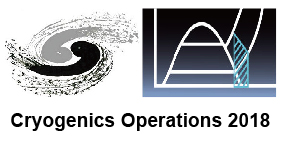Dong-Seong PARK
(National Fusion Research Institute)
The nuclear fusion research is in progress for the next generation energy source in many countries. The Korean large fusion device whose name is Korea Superconducting Tokamak Advanced Research (KSTAR) is made of Nb3Sn and NbTi superconductor and it is necessary to cool down to liquid temperature. In order to proper operation of the KSTAR superconducting (SC) magnets, a Helium Refrigeration System (HRS) with an exergetic equivalent cooling power of 9 kW at 4.5 K was installed and commissioned in 2008.
After then, the KSTAR device was ready for the first campaign and has been operated successfully since 2008 and the HRS has presented sufficient cooling power for last 9 years.
During the campaign period of KSTAR, the HRS has experienced several abnormal events such as utilities failure and equipment failures. In this presentation will show the result of operation, maintenance, failures, repair, system modification as well as the reliability of the KSTAR HRS.
Summary
The helium refrigeration system (HRS) of Korea Superconducting Tokamak Advanced Research (KSTAR) with an equivalent cooling power of 9kW at 4.5K has been operated since 2008. The cryoplant for superconducting (SC) fusion device is designed and constructed to cope with pulsed thermal load that is more severe operating condition than the accelerator cryoplant. During over 30,000 operation hr from 2008 to 2017, the KSTAR HRS faced a few abnormal events. Even though the abnormal events while operation, the KSTAR HRS has demonstrated sufficient performance and reliability thanks to superior design of equipment and professional effort of operating personnel. During the maintenance period of KSTAR, there were a lot of efforts in order to increase system reliability and efficiency. Thanks to these efforts, the KSTAR HRS present excellent system availability and it is ready for the KSTAR campaign in 2018.
There are no materials yet.

